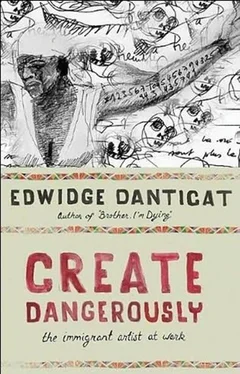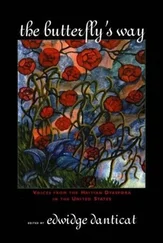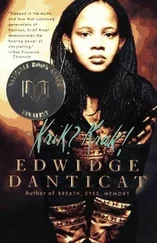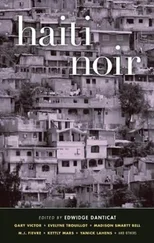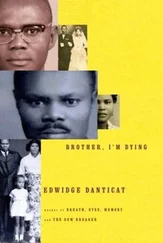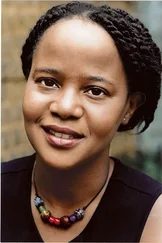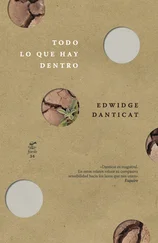He is working on a book about Haiti’s oldest musical group, Orchestre Septentrional d’Haiti. The band had once written and performed songs honoring François “Papa Doc” Duvalier. Perhaps they had done this as a means of survival because they’d witnessed from the stage how people were brutally beaten and sometimes even shot dead by the Duvaliers’ henchmen at their shows. The musicians of Orchestre Septentrional would later write and perform songs encouraging resistance and struggle and celebrating the end of the dictatorship. Because Orchestre Septentrional d’Haiti was adored by Duvalier’s Tonton Macoutes, Daniel Morel had once dismissed them, thinking that they were mizisyen palè , mercenary artists. But one time he had a flat tire near a club where they were performing and, while waiting for the tire to get fixed, he fell madly in love with their music without realizing it was theirs.
“In Haiti music is a big part of the political landscape,” he writes, along with his collaborator Jane Regan, in the after-word to their still unpublished Septentrional book. “Each regime has had music that helped it take power. And each used music to stay in power. And music was also often used to help bring regimes down. Haitian politicians figure out which bands are the most popular and they support them-with instruments, funding for carnival and ‘fêtes champêtres’ (country festivals) appearances and so on… Septentrional has so far survived the political and social storms which have ravaged Haiti the country and the musical and cultural ones which threaten to bury all that is Haitian.”
He appreciates the group so much now that he’s also working on a documentary film about them. When he stopped by my house in Miami, he was on his way to photograph the funeral of one of the group’s oldest leaders.
“I am not going to photograph his death,” he said, “I am going to photograph his life. Someone can be in a coffin and you can bring them back to life if you capture them well enough, if you capture their spirit. I don’t photograph death at funerals. I photograph life.”
I ask him if he thinks there’s a link between photography and death, and he laughs and says, “Posing is death. I think when you make people pose for a photograph, you kill them.”
I tell him about a studio photographer in Little Haiti who says that he became a photographer because his mother died when he was a baby and, since there were no photographs of her, he never got to see her face. Now this man purposely takes portraits of other people’s mothers and imagines his own in them.
I also cite my favorite Haitian poem that mentions photographs, Felix Morisseau Leroy’s “Tourist,” and together we recite a few lines we both know by heart.
Tourist, don’t take my picture
Don’t take my picture, tourist
I’m too ugly
Too dirty
Too skinny
Don’t take my picture, white man
Mr. Eastman won’t be happy
I’m too ugly
Your camera will break
I’m too dirty
Too black
At the heart of this, we agree, is a plea from the voice at the other end of the lens-a very rare moment when a poverty-stricken photography subject actually speaks-of the fear of being misread, mis-seen, and misunderstood, of being presented out of context. It is a fear that is very similar to that of other subjects who worried that their souls might be stolen through the narrow lenses of a machine that exists outside of their experience. Allowing one’s self to be photographed, both when the photographer is a stranger and when it is someone we know, is an act of great trust. And one can sense when there is comfort and discomfort between the subject and the lens, the capturer and the captured. And captured is what many of the subjects of Daniel’s pictures are. Even before their photographs were taken, they were already captured by the gods of painful circumstances.
On the flip side, though, of one person begging not to be photographed is another paradigm. Please take my picture, someone caught in an impossible situation might say.
Jounalis la, please take my picture
Please take my picture, atis la
I’m needy
Desperate
Trapped
Please take my picture, jounalis
Screw Mr. Eastman
I’m not too ugly
Your camera will not break
I’m not too dirty
Not too black
After four consecutive storms ravaged Haiti, my friend the Miami Herald journalist Jacqueline Charles told me how, when she arrived with the photographer Patrick Farrell at a catastrophic scene where some dead children had been fished out of an overflowing river, a grieving father begged for some clean water to wash his mud-covered daughter and for a pretty dress to put on her before her photograph-which was later part of a Pulitzer Prize-winning series of photographs-was taken. Knowing that this would be the last image of his daughter, the father wanted her to look her absolute best.
The father, Jacqueline told me, desperately wanted his daughter’s story to be told, knowing that though hers was a singular tale, her face a singular image, it could reveal a great deal about the larger disaster of the storms. In that way, the heartbroken father was following a long-honored tradition, in Haiti and elsewhere, of taking a keepsake photograph of the dead as a way of keeping them with us, and at the same time allowing his loved one’s face to stand for many.
Another photographer, an Israeli named Daniel Kedar, had traveled all over Haiti and taken pictures of peasant farmers who’d never seen photographs of themselves. They sometimes denied their own image to him when he handed them the instantly printed photographs.
“No, I am not that skinny,” some would say. “No, I am not that old.”
When everything does not rely on our image, do we imagine ourselves at all? Is there even a need for it when our face is ours alone? To suddenly become emblematic of a problem, the “face” of a ravaged Haiti, is its own rude awakening, its own culture shock. Yet it allows a larger story to be told that in many ways can be helpful, because it fights complete erasure. It forces others to remember that we were-are-here.
“ Pita nou lèd, nou la ,” boldly claims the Haitian proverb. Better that we are ugly, but we are here.
“Photography has something to do with resurrection,” Roland Barthes wrote, “might we not say of it what the Byzantines said of the image of Christ which impregnated St. Veronica’s napkin: that it was not made by the hand of man, acheiropoietos ?”
Might we not say the same of all impassioned creative endeavors?
“I never intended to become a photojournalist,” Daniel Morel tells me more than once. “I became a photojournalist because at Numa and Drouin’s execution, I felt afraid and I never wanted to feel afraid again. I take pictures so I am never afraid of anyone or anything. When I take pictures, I feel like something is shielding me, like the camera is protecting me.”
Did he, as a boy, want to protect Numa and Drouin? I ask.
He could not protect them, he said, but over the years he has felt as though he’s managed to protect other Numas and other Drouins with his photographs. And during this final conversation, I am even more certain that to create dangerously is also to create fearlessly, boldly embracing the public and private terrors that would silence us, then bravely moving forward even when it feels as though we are chasing or being chased by ghosts.
At the beginning of his 1955 short story “Jonas ou l’artiste au travail” (Jonah, or the Artist at Work), Albert Camus cites as an epigraph the following verse from the book of Jonah.
Take me up and cast me forth into
the sea… for I know that for my
sake this great tempest is upon you.
Читать дальше
